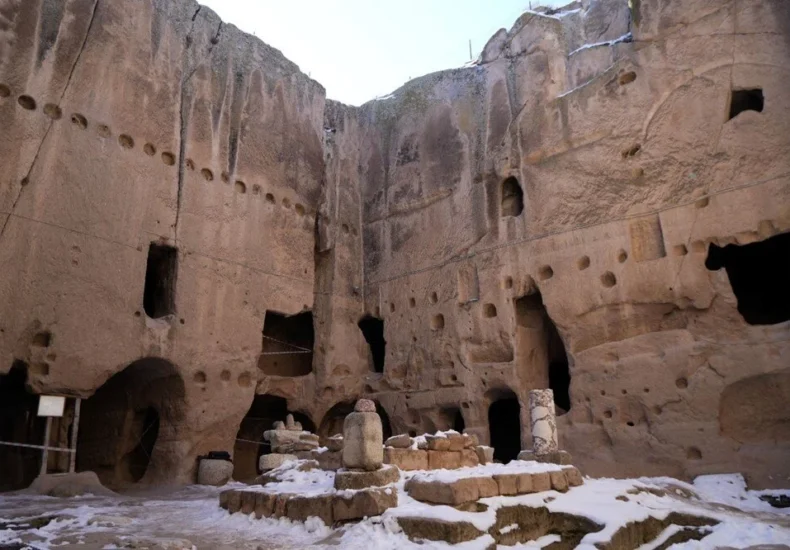
Gümüşler Monastery: The Petra of Anatolia and the Mystery of the “Smiling Virgin Mary”
The Gümüşler Monastery, one of Cappadocia’s best-preserved monasteries, often referred to as the “Petra of Anatolia,” draws attention with its historical structure and frescoes.
Located in the Gümüşler town of Niğde in the Cappadocia region, the Gümüşler Monastery is famous for its “Smiling Virgin Mary” fresco. Believed to have been built between the 8th and 12th centuries, the monastery encompasses a rock-carved settlement stretching over approximately 1.5 kilometers and a rock monastery church carved into a tuff rock mass.
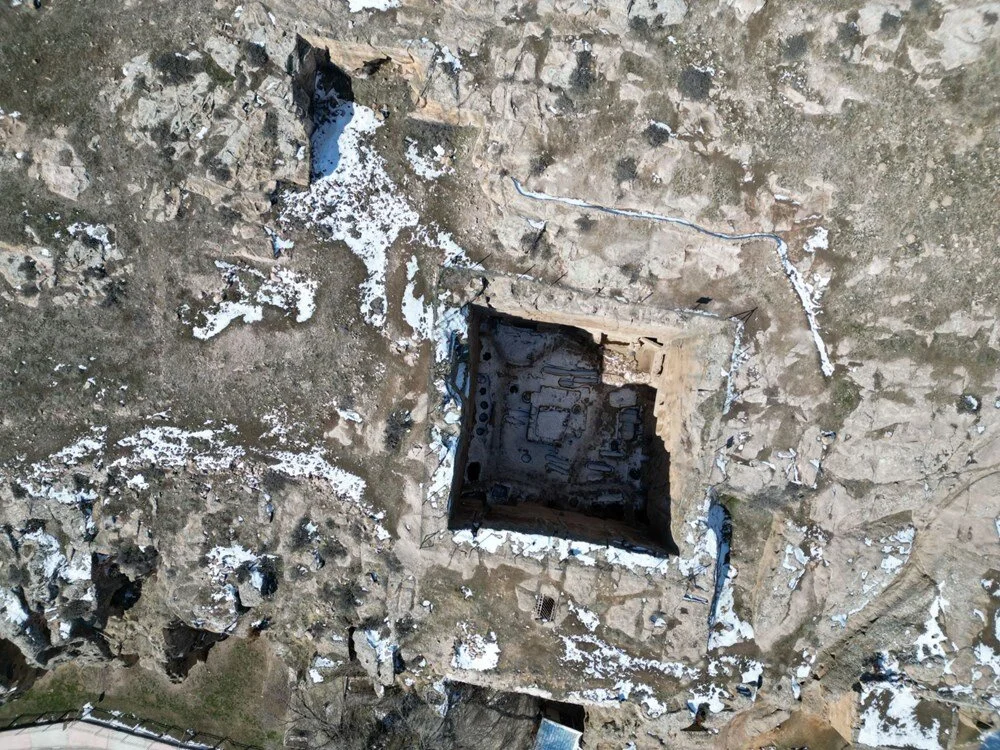
Prof. Dr. Nevzat Topal, Dean of the Faculty of Humanities and Social Sciences at Niğde Ömer Halisdemir University, emphasized that the Gümüşler Monastery and its surroundings have been home to many civilizations throughout history. Highlighting the region’s geopolitical location, Prof. Dr. Topal stated, “Central Anatolia is situated on the Taurus Mountains, which connect the South to the Mediterranean, and these mountains only allow for rare passages. Looking north from the Gülek Pass, we are on a transit route extending to Central Anatolia, and looking south, to the Mediterranean and Syria.” He noted that this strategic location has made the region important throughout history.
Prof. Dr. Topal also recalled that influential figures in the early periods of Christianity in the Cappadocia region were active in places like Andaval, Tyana, Gölcük, and Aksaray. He stated that these settlements played a significant role in the spread of Christianity and that the Gümüşler Monastery holds a special place in this historical process.

Comparing the Gümüşler Monastery to important religious structures worldwide, Prof. Dr. Topal said, “Just as the Sümela Monastery in Trabzon, the temples in China, or the religious buildings in Spain are actively utilized for tourism, the Gümüşler Monastery should also receive the value it deserves. Many researchers call this structure ‘Miniature Cappadocia.’ This description alone is enough to show how important the monastery is.”
Archaeologist Mustafa Eryaman stated that the Gümüşler Monastery, home to the best wall paintings in the Cappadocia region, has its walls adorned with frescoes of Prophet Jesus, his mother Mary, and important figures from the early period of Christianity. He also mentioned that the monastery is described as the Petra of Anatolia.
Drawing attention to the importance of the architectural details of the historical structure, Eryaman noted that the Virgin Mary fresco in the monastery still retains its mystery.
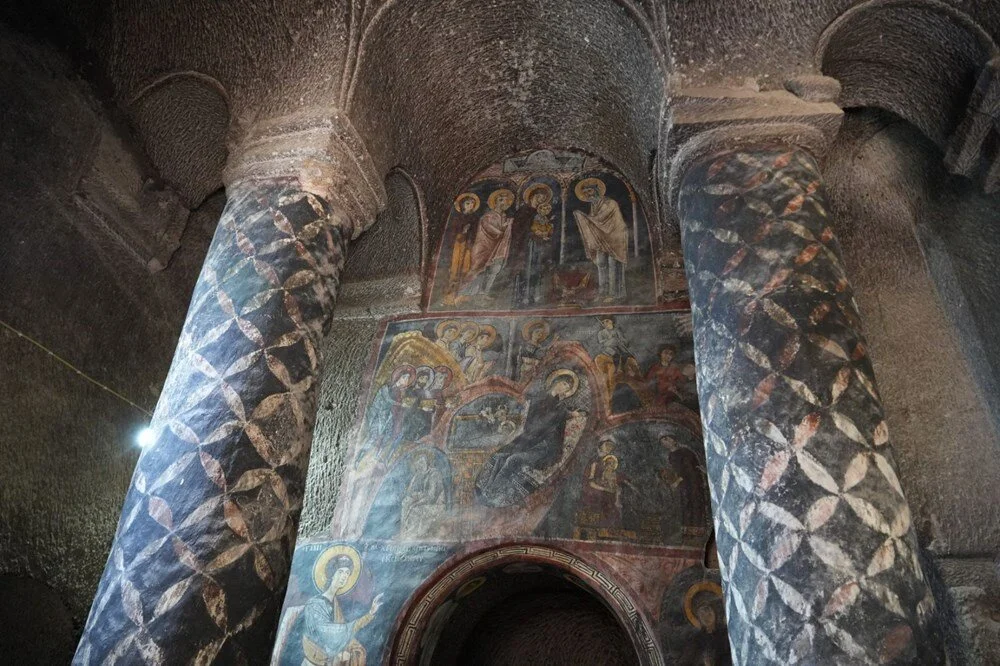
Eryaman said, “The Gümüşler Monastery is one of the churches in the Cappadocia region with the best wall paintings. Its walls are decorated with pictures of Prophet Jesus, his mother Mary, and the leading figures of the early Christian period. The monastery, also referred to as the Petra of Anatolia, incorporates both plan types found in the churches of the Cappadocia region. Here, we see the first attempts at decoration. The narthex section was shaped in the 7th century by the masters of the time with pen work decorations. This also provides a dating. When we look at other underground churches in the Cappadocia region, we see scenes from the Holy Bible, the Gospel. The scenes are predominantly the Annunciation, the Nativity, and the Presentation at the Temple, depicted side by side. We can also see these three scenes in the Gümüşler Monastery. On the other hand, we can clearly see a slight smile on the Virgin Mary’s fresco, and the monastery stands out in this respect as well. Whether she was really smiling or if this was later created by a brushstroke is a debate and mystery that continues today.”
You may also like
- A 1700-year-old statue of Pan unearthed during the excavations at Polyeuktos in İstanbul
- The granary was found in the ancient city of Sebaste, founded by the first Roman emperor Augustus
- Donalar Kale Kapı Rock Tomb or Donalar Rock Tomb
- Theater emerges as works continue in ancient city of Perinthos
- Urartian King Argishti’s bronze shield revealed the name of an unknown country
- The religious center of Lycia, the ancient city of Letoon
- Who were the Luwians?
- A new study brings a fresh perspective on the Anatolian origin of the Indo-European languages
- Perhaps the oldest thermal treatment center in the world, which has been in continuous use for 2000 years -Basilica Therma Roman Bath or King’s Daughter-
- The largest synagogue of the ancient world, located in the ancient city of Sardis, is being restored

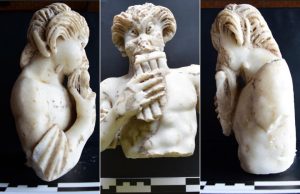
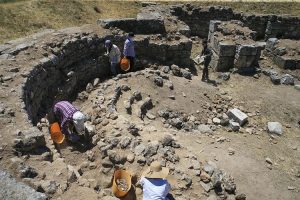
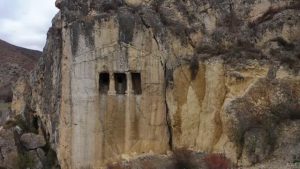
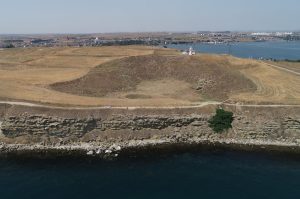
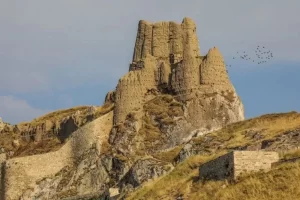

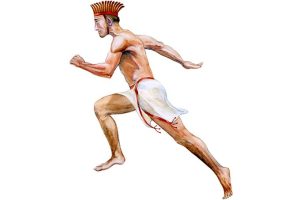

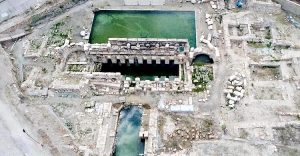
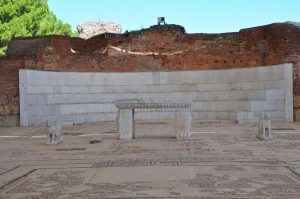
Leave a Reply